
-
Find the right food for your petTake this quiz to see which food may be the best for your furry friend.Find the right food for your petTake this quiz to see which food may be the best for your furry friend.Featured products
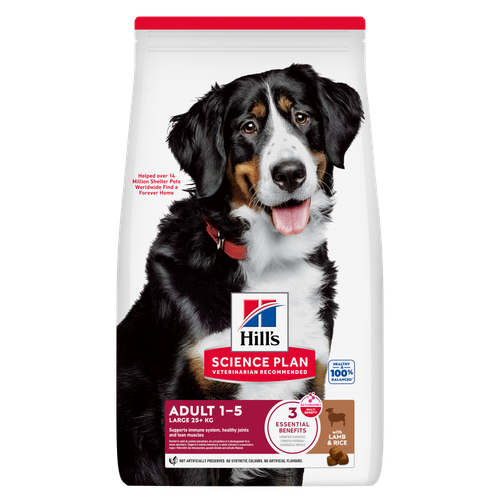 Large Breed Adult Dog Food
Large Breed Adult Dog FoodHill's Science Plan Large Breed Adult Dog Food with Lamb & Rice is a complete pet food, specially formulated with ActivBiome+ Multi-Benefit Technology.
This food is specifically designed to fuel the energy needs of large breed dogs during the prime of their life.Shop Now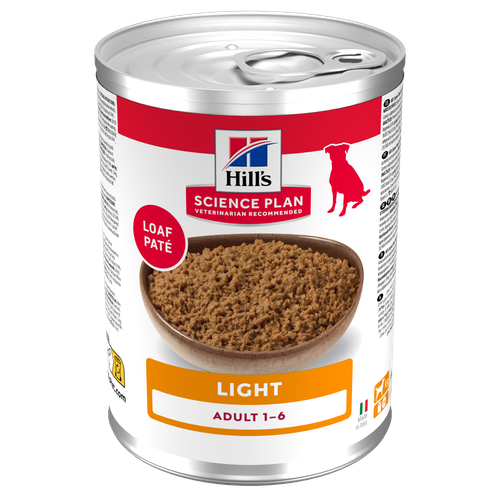 Adult Light Dog Food
Adult Light Dog FoodHill's Science Plan Light Adult Wet Dog Food is a complete premium pet food for adult dogs that tend to gain weight easily. This deliciously smooth loaf is formulated to deliver the appropriate amount of energy to support weight maintenance in adult dogs.
Shop Now Perfect Digestion Large Breed Puppy Food
Perfect Digestion Large Breed Puppy FoodPrecisely balanced nutrition with Hill's ActivBiome+ prebiotic blend actively contributes to supporting digestive health and overall wellbeing to help your pet feel their best
Shop NowFeatured products CULINARY CREATIONS ADULT CAT FOOD
CULINARY CREATIONS ADULT CAT FOODHill's Science Plan CULINARY CREATIONS Adult cat food with Salmon & Carrots was formulated to provide a great-tasting experience to cats. Its delicious flavour and texture are combine with essential nutrients to support cats' optimal health during the prime time of their life. Specially formulated with high-quality salmon protein, essential taurine for heart health & balanced minerals to support kidneys & bladder.
Shop Now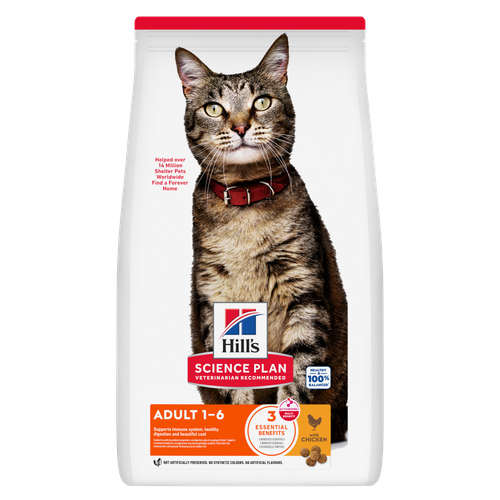 Adult Cat Food
Adult Cat FoodHill's Science Plan Adult Cat Food with Chicken is a complete pet food, specially formulated with ActivBiome+ Multi-Benefit Technology.
This food is specially formulated to fuel the energy needs of cats during the prime of their life.Shop Now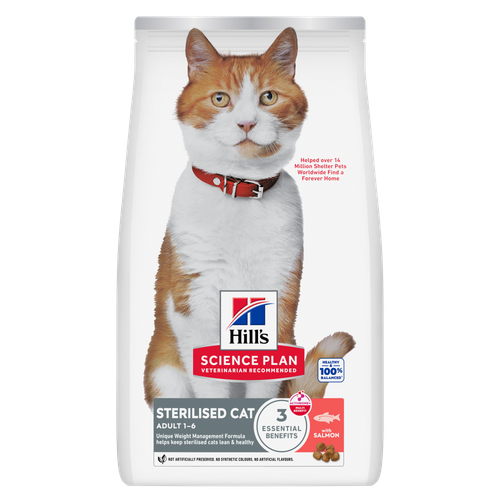 Sterilised Adult Cat Food
Sterilised Adult Cat FoodHill's Science Plan Adult Sterilised Cat Dry Food with Salmon is specially formulated with ActivBiome+ Multi-Benefit Technology. It is a precisely balanced nutrition, tailored to meet the needs of sterilised cats, to help keep sthem lean & healthy.
Shop Now -
Dog
- Dog Tips & Articles
-
Health Category
- Weight
- Food & Environmental Sensitivities
- Urinary
- Digestive
- Joint
- Kidney
-
Life Stage
- Puppy Nutrition
- Adult Nutrition
- Senior Nutrition
Cat- Cat Tips & Articles
-
Health Category
- Weight
- Skin & Food Sensitivities
- Urinary
- Digestive
- Kidney
-
Life Stage
- Kitten Nutrition
- Adult Nutrition
Featured articles The Incredible Science Behind Your Pet's Microbiome
The Incredible Science Behind Your Pet's MicrobiomeLearn what your pet's microbiome is, how it contributes to your pet's gut and overall health, and why nutrition is important in maintaining healthy microbiomes.
Read More Pet Nutrition: What Makes "Healthy" Pet Food Healthy? | Hill's Pet
Pet Nutrition: What Makes "Healthy" Pet Food Healthy? | Hill's PetIn people, the right diet is very important. If you are eating the wrong way for your metabolism, activity level, age and lifestyle you could end up with health issues.
Read More Microchipping: The Facts | Hill's Pet
Microchipping: The Facts | Hill's PetThe government has announced that as of April 2016, all dogs in the UK must be microchipped by law.
Read More -


A spirited romp, an impressive leap, a lazy feline stretch — movement is vital to a cat's everyday life. And your cat's joint health is key to their ability to squirm and swipe and jump. Their joint health and mobility go hand in hand.
But if your kitty has a disease that affects their joints, or if they're older or overweight, they may experience joint issues that limit movement. Read on to learn what you, as a cat parent, should know about cat mobility and joint health for cats.
Causes of Declining Cat Mobility
The two most common causes of reduced cat mobility are a decline in joint health and obesity. Obesity can speed up and worsen normal joint aging. However, cats of all sizes can experience joint issues at as early as 6 months old.
The most common reason for a decline in joint health for cats is degenerative joint disease (DJD), commonly referred to  as osteoarthritis. DJD occurs when a cat's joint cartilage weakens and ultimately deteriorates. The absence of cartilage leads to the bones of the joints rubbing together, causing inflammation and pain, especially when a cat moves.
as osteoarthritis. DJD occurs when a cat's joint cartilage weakens and ultimately deteriorates. The absence of cartilage leads to the bones of the joints rubbing together, causing inflammation and pain, especially when a cat moves.
The following conditions can contribute to DJD and reduced mobility:
- Hip dysplasia
- Cruciate ligament disease
- Intervertebral disc disease
- Infections
- Trauma (including declawing)
- Cancer
- Diabetes
- Autoimmune diseases
Signs of Declining Cat Mobility
Cat parents should pay close attention to their kitties' behavior. Cats usually only show subtle signs of weakening joints, so pet parents may mistake the behavioral changes they see as normal or age-related.
Watch out for the following signs when evaluating your cat's mobility and overall joint health:
- Reduced jumping (or failure to reach higher surfaces)
- Walking less frequently and spending more time at rest
- Walking with a hunched posture
- Loss of muscle mass, especially in the hind limbs and around the spine
- Hiding behavior
- Unkempt coat appearance
- Weight gain
- Constipation
- Sensitivity to brushing or petting, especially on the lower back
If you see any of these behaviors in your cat, be sure to make an appointment with the veterinarian. All of these signs point to declining joint health and could mean your kitty is in pain.


Tasty Tips
How to Support Your Cat's Mobility
There's plenty that cat parents can do to maintain their kitties' joint health and mobility, and prevent future joint pain.
To promote joint health, keep your cat at an ideal weight from an early age, help them maintain an active lifestyle and make sure they get routine veterinary care.
Smart cat parents intent on improving their cats' mobility will also recognize the role of nutrition early on. Feeding your cat with an eye toward portion control and obesity prevention is crucial, but picking the right meal plan for optimal joint health is equally important. Always ask for your vet's help when selecting cat food and nutritional supplements. Beyond just your cat's meals, it's on you and your family to also ensure that she doesn't get additional scraps of human foods that can quickly add on unwanted pounds.

The Role of Exercise in Cat Mobility
A cat's mobility and overall joint health vary greatly depending on how active she is. Regular exercise is important for all cats, regardless of size. Here's why: Sturdier bones with well-used joints leads to increased flexibility and protection against injury. And micro-injuries that occur from regular wear and tear can cause osteoarthritis.
Consider the following tips to keep your kitty active and engaged in her environment, and support her mobility:
- Engage in multiple play sessions throughout the day. Having kitty playmates adds additional opportunities for playful exercise.
- Offer your cat a more physically challenging home life by adding shelving and cat trees. This not only leads to more jumping — it expands a cat's territory, which is always a good thing.
- Feeding several small meals a day (instead of two large meals) improves mobility and environmental stimulation, according to the American Association of Feline Practitioners. Using puzzle feeders and having your kitty "forage" for her food also promotes physical activity. This is different from free feeding, which is leaving food out all day and allowing your cat to eat at their desire. Rather, this means providing scheduled smaller meals based on your veterinarian's recommendation.
Treating Cats With Joint and Mobility Issues
Veterinary intervention is crucial for cats with joint and mobility problems. First, the vet will conduct a complete examination of your cat. They may perform X-rays and blood tests. Based on the test results, the vet may recommend one or more of the following treatments:
- NSAIDs (non-steroidal anti-inflammatory drugs) and other pain medication: Can safely alleviate pain and swelling in joints
- Amitriptyline: Also commonly prescribed for pain
- Alternative medical treatments: Could include acupuncture or laser treatment
- Therapeutic cat food: Be sure to ask your doctor about foods specially formulated for joint health, as promoting your cat's mobility could improve simply by swapping her food for one of these therapeutic meals.
- Nutritional supplements: May be helpful in the treatment and prevention of degenerative joint disease
No matter your cat's age or size, encouraging more activity is always a good idea. And be sure to check in with your vet if you notice any reduction or change in your cat's movement. As a cat parent, it's up to you to keep your kitty moving!


Dr. Patty Khuly is an award-winning veterinarian known for her independent thinking, her spirited pet advocacy, her passion for the veterinary profession, and her famously irreverent pet health writing.
Dr. K is an honors graduate of both Wellesley College and the University of Pennsylvania School of Veterinary Medicine. She received her MBA at The Wharton School of Business as part of the prestigious VMD/MBA dual-degree program. She now owns Sunset Animal Clinic, a veterinary practice in Miami, Florida.
Related products

Hill's Science Plan Adult Cat Food with Chicken is a complete pet food, specially formulated with ActivBiome+ Multi-Benefit Technology.
This food is specially formulated to fuel the energy needs of cats during the prime of their life.

Hill's Science Plan CULINARY CREATIONS Adult cat food with Salmon & Carrots was formulated to provide a great-tasting experience to cats. Its delicious flavour and texture are combine with essential nutrients to support cats' optimal health during the prime time of their life. Specially formulated with high-quality salmon protein, essential taurine for heart health & balanced minerals to support kidneys & bladder.
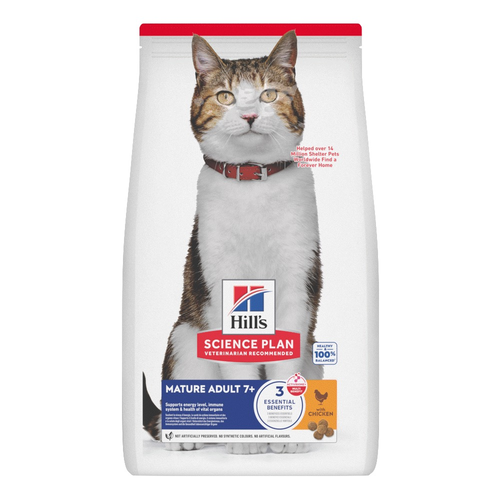
Hill's Science Plan Mature Adult Cat Food with Chicken is a complete pet food, specially formulated with ActivBiome+ Multi-Benefit Technology.
This food supports graceful aging in cats, providing a synergistic ingredient blend to help support energy & activity levels.

Hill's Science Plan Adult Sterilised Cat Dry Food with Salmon is specially formulated with ActivBiome+ Multi-Benefit Technology. It is a precisely balanced nutrition, tailored to meet the needs of sterilised cats, to help keep sthem lean & healthy.
Related articles

Understand common skin issues in cats and how to manage them effectively. Learn signs and prevention, and get care tips. Find out more at Hill's Pet.

Learn about the causes of cat dermatitis, how to spot the symptoms and the best treatment options. Visit Hill's Pet for detailed guidance and tips.

Learn how your cat's poo can be a good indicator of her overall health, including how to spot unhealthy or abnormal cat poop and what it might mean.

Cats with sensitive skin have special needs and even healthy cats can sometimes develop poor skin health. Learn more about sensitive skin symptoms in your cat, what you can do to help your pet feel more comfortable and get recommendations on sensitive skin cat food.

Put your cat on a diet without them knowing
Our low calorie formula helps you control your cat's weight. It's packed with high-quality protein for building lean muscles, and made with purposeful ingredients for a flavourful, nutritious meal. Clinically proven antioxidants, Vitamin C+E, help promote a healthy immune system.
Put your cat on a diet without them knowing
Our low calorie formula helps you control your cat's weight. It's packed with high-quality protein for building lean muscles, and made with purposeful ingredients for a flavourful, nutritious meal. Clinically proven antioxidants, Vitamin C+E, help promote a healthy immune system.

